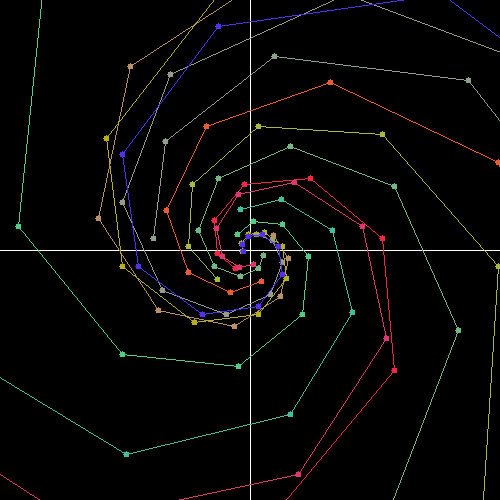Bitácora mundana
This article has been taken from the blog Physics Napkins and is published here by permission. The author is Javier Rodríguez Laguna.
The following dialogue, its situations, characters and institutions are completely fictional. Or almost.
Two researchers, in their late thirties, meet at the college cafeteria.
Sandy. Hey, Cris, you’re back from Spain! How did the selection process go?
Cris. Bad, the insiders got the tenure positions, but I knew it was going to be that way. You know how my country is. My CV was much better than theirs, and my lecture was terrific… but there was nothing to do.
Sandy. Yeah, don’t think it’s much better here…
Cris. Well, I don’t know. They evaluated my CV “logarithmically”, if you catch my drift: for example, by multiplying your papers by 2 you earn one extra point. Then, the evaluation of the lecture is very subjective… and that’s what they use to select the inside candidates.
Sandy. Why would they do so?
Cris. It’s easy: because the professors in the department are completely clueless, they don’t want new professors which can overshadow them.
Sandy. Where was the position?
Cris. It was for the mathematics department of a school of building engineering. That’s one of the most stupid things we have in Spain: the hyperfragmentation of the university. You decide your major at 18, when you reach college, and you can’t change easily. In many cases, such as UPM in Madrid, there are as many mathematics departments as there are schools. Tiny departments which do almost no research, dominated by their feudal lords.
Sandy. Like a community college here.
Cris. Much worse! They can do research, just they choose not to. But you know what was the funniest part? The committee argued endlessly about my research in theoretical physics being inappropriate for an applied mathematics department.
Sandy. No way!
Cris. Yes! I challenged them to tell me what is the difference between theoretical physics and applied mathematics…
Sandy. What did they say?
Cris. What did they say!? They mumbled about the names of the journals I use to publish in! If the title contains “physics”, then it’s physics. If it contains “mathematics”, or “geometry”, or “algebra”, then it’s mathematics.
Sandy. And what if it’s “Communications in mathematical physics”?
Cris. That’s too mind-boggling for them! One of the guys simply asked me: “can you tell me one of your papers which is really mathematical”? I answered: “what about the one I discussed about the Riemann hypothesis?”
Sandy. Hahaha! Yeah, I remember, your fighting with proving the Riemann hypothesis using quantum mechanics.
Cris. Yeah… they told me that my papers are physics-motivated, not mathematics motivated. So, that’s where I told them that that sentence made no sense. Of course, in kinder terms… I added that it was OK to talk about papers focusing on methodology and papers focusing on the solution of a certain problem.
Sandy. Yeah, that might do as a distinction between math and physics, doesn’t it?
Cris. No, it doesn’t! A lot of physics papers focus on the techniques or the formalism. But, even worse, applied mathematics should focus on problem solving, right? I mean, real life problems. Such as… physics! Then I got a bit pedantic, and told them that mathematics comes from “máthema”, which in Greek means “what we learn”, while physics comes from “physis”, which means “Nature”. And I told them: what can you learn about, other than Nature?
Sandy. Hahaha! That made them hate you, for sure.
Cris. You bet. I even cited Arnol’d, and the speech he gave in Paris in 1999, emphasizing the close nature of mathematics and physics.
Sandy. Yeah, I remember that. Arnol’d was amazing. He hated the Bourbaki spirit in mathematics. He said they had converted mathematics into a game, a purely logical game. All branches of mathematics are inspired in physics, right?
Cris. Right! Arithmetics comes from counting. Geometry and probability are very clearly physical. And calculus is an abstraction of the theory of motion.
Sandy. Exactly. A mathematician which considers herself to be “applied” should be someone who is able to apply all kinds of mathematical tools to real-life problems. And a theoretical physicist is usually good at that.
Cris. Also, they rejected immediately a candidate with a CV which was similar to mine, because her teaching had been in physics.
Sandy. Again, the same thing applies. In fact, the distance between teaching calculus and mechanics is the same as the distance between teaching mechanics and thermodynamics.
Cris. Absolutely.
Sandy. I assume they didn’t teach much advanced mathematics to those building engineers.
Cris. Of course they didn’t. In fact, their calculus didn’t contemplate Taylor’s theorem, their vector calculus stopped at double integrals, and their algebra didn’t include complex numbers. My god! The students never reach the level!!
Sandy. Hahaha! Yeah, I know that’s your pet peeve… You think the students only get their mathematical maturity when they understand that formula.
Cris. Of course I do! That’s the moment when they stop being little padawans and they receive their jedi sword!
Sandy. Yeah, you love beauty in mathematics.
Cris. You bet I do! In gave my lecture on eigenvalues and eigenvectors, and I produced some nice animations… But even more important, I started with the Fibonacci numbers.
Sandy. You did what!?
Animation presented by C during the lecture, showing orbits obtained when acting several times with a certain matrix.

Cris. I discussed how to get a closed formula for the n-th Fibonacci number by raising a matrix to a certain power.
Sandy. How can you do that?
Cris. I wish you had seen me! It was like making magic when you do it slowly… the golden section appears as an eigenvalue of the matrix which generates the Fibonacci numbers… it’s wonderful when you see why. Grab a napkin, I will tell you.
Sandy. Sure.

